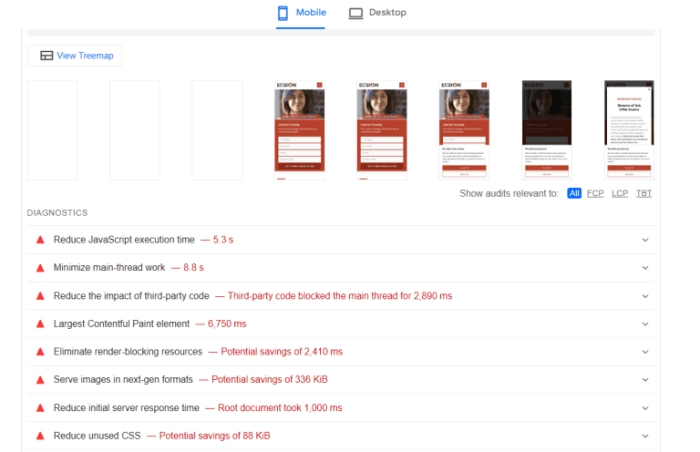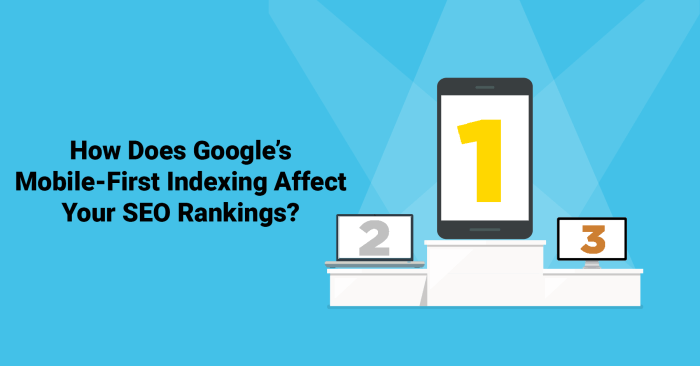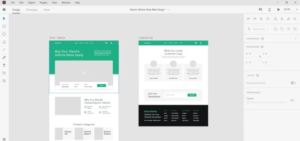
Mobile-first indexing and are reshaping how businesses approach their online presence, reflecting the growing importance of mobile usability in today’s digital landscape. As more users access websites via mobile devices, search engines have shifted their focus to prioritize mobile-friendly sites in their rankings, making it crucial for webmasters to adapt.
This shift means that understanding mobile-first indexing isn’t just a technical necessity; it’s a strategic imperative. By implementing best practices tailored for mobile optimization, businesses can enhance their visibility and ensure an optimal user experience, ultimately leading to better engagement and conversions.
Mobile-First Indexing and Its Importance
Mobile-first indexing is a crucial development in the way search engines evaluate and rank websites. As more users access the internet via mobile devices, search engines like Google have adapted their indexing methods to prioritize mobile versions of web content. This shift signifies a transition where the mobile version of a site is considered the “primary” version, impacting its visibility and ranking in search results.The significance of mobile-first indexing lies in its reflection of user behavior and technological trends.
With mobile traffic surpassing desktop in many regions, search engines aim to deliver the most relevant content to users based on their browsing preferences. Consequently, websites that are not optimized for mobile may find themselves at a disadvantage in search rankings. This transformation urges webmasters to prioritize mobile design, ensuring seamless user experiences that can significantly influence engagement and conversion rates.
Impact on Website Rankings
The adoption of mobile-first indexing directly affects how websites are ranked on search engines. When a search engine crawls websites, it now prioritizes the mobile version for indexing and ranking. This change introduces a new set of criteria for evaluating a site’s relevance and quality. Websites that provide an optimal mobile experience often enjoy higher search rankings, while those lagging behind in mobile optimization risk lower visibility.
Factors influencing rankings include:
- Page load speed, where faster-loading pages retain users better and improve rankings.
- Mobile usability, which encompasses ease of navigation and overall user experience on mobile devices.
- Content accessibility, ensuring that important information is readily available and not hidden behind expandable menus or features that may not function well on mobile.
- Responsive design, which allows a website to adapt to any screen size, maintaining functionality and aesthetic appeal.
The importance of these factors cannot be overstated, as a mobile-friendly site not only meets user expectations but also aligns with search engine algorithms designed to deliver the best search results.
Best Practices for Optimizing for Mobile-First Indexing
To effectively optimize a website for mobile-first indexing, several best practices should be implemented. These practices enhance the site’s performance on mobile devices while meeting search engine criteria:
- Use responsive web design: This ensures that your website’s layout adjusts seamlessly to different screen sizes without compromising content quality.
- Optimize images: Utilize appropriately sized images and modern formats like WebP to enhance load times and performance.
- Improve page speed: Minimize HTTP requests, leverage browser caching, and utilize Content Delivery Networks (CDNs) to ensure quick loading times, which is crucial for mobile users.
- Prioritize above-the-fold content: Ensure that critical content is immediately visible without excessive scrolling, improving user engagement.
- Implement structured data: Using schema markup helps search engines understand the context of your content, enhancing rich snippets in search results.
- Test mobile usability: Regularly use tools like Google’s Mobile-Friendly Test to check how well your site performs on mobile devices and make necessary adjustments.
Implementing these best practices not only positions a website favorably for search engine rankings but also improves overall user satisfaction, which is a vital component in today’s digital landscape.
Strategies for Enhancing with Mobile-First Indexing

In an era where mobile devices dominate internet usage, optimizing your website for mobile-first indexing is crucial for improving your . Strategies to enhance in this context not only boost your site’s visibility but also enhance user experience across various devices. Below are effective methods to ensure your website performs well on mobile platforms.
Improving Website Performance on Mobile Devices
The performance of a website on mobile devices can significantly impact its search engine ranking. A fast-loading website is essential because users tend to abandon sites that take too long to load. Here are some strategies to enhance mobile performance:
- Optimize Images: Use compressed and appropriately sized images to reduce loading times without sacrificing quality. Tools like TinyPNG can help achieve this effectively.
- Minimize HTTP Requests: Reduce the number of elements on your page to lower the number of HTTP requests during loading. Consolidating CSS and JavaScript files can be beneficial.
- Leverage Browser Caching: Enable caching to allow returning visitors to load your site faster. This can be achieved through setting appropriate cache control headers.
- Implement Lazy Loading: Load images and videos only when they enter the viewport, which reduces initial load times and improves overall user experience.
- Utilize Content Delivery Networks (CDNs): CDNs can distribute your content across multiple locations, ensuring faster delivery based on the user’s geographical location.
Ensuring Content Accessibility and User Experience on Mobile
Content accessibility and user experience are paramount when it comes to mobile-first indexing. The goal is to create an engaging and intuitive experience for users on smaller screens. Consider the following practices:
- Use Legible Font Sizes: Ensure text is easily readable without users having to zoom in. A minimum font size of 14px is recommended.
- Design for Touch: Make buttons and clickable elements large enough to be tapped easily without worrying about precision. A minimum target size of 44×44 pixels is suggested.
- Prioritize Content: Place the most important information at the top of the page to capture user attention immediately.
- Eliminate Pop-ups: Avoid intrusive pop-up ads that can hinder the user experience. Use banners that take up less space and are easy to dismiss.
- Test Across Devices: Regularly test your site on various mobile devices and browsers to identify usability issues and make necessary adjustments.
Role of Responsive Design in Mobile-First Indexing and
Responsive design plays a critical role in mobile-first indexing and search engine optimization. It ensures that your website automatically adjusts to different screen sizes and orientations, providing a seamless experience regardless of the device used. Here are some key points about responsive design:
- Unified URL Structure: A responsive website uses the same URL for both desktop and mobile versions, simplifying the indexing process for search engines.
- Enhanced User Experience: Responsive design enables a consistent and user-friendly experience across all devices, which reduces bounce rates and improves engagement.
- Improved Performance: Responsive sites are often faster because they serve the same HTML to all devices, adapting content layout via CSS.
- Better Signals: Search engines, like Google, favor responsive design, which means responsive sites are more likely to rank higher in search results.
- Future-Proofing: With the rapid evolution of devices, responsive design ensures your website remains accessible and visually appealing, regardless of new screen sizes or resolutions.
Responsive design is not just a trend, but a fundamental approach to web design that enhances both user experience and performance.
Integrating Mobile-First Indexing with Digital Marketing
The integration of mobile-first indexing into digital marketing strategies is essential for businesses looking to thrive in today’s digital landscape. As mobile usage continues to surge, understanding the implications of this shift on marketing efforts can help ensure that brands remain competitive and visible. Mobile-first indexing means that Google primarily uses the mobile version of a website’s content for indexing and ranking.
Thus, aligning digital marketing strategies with mobile-first principles is crucial for optimizing visibility and engagement.The relationship between mobile-first indexing and search engine marketing (SEM) is significant. Since mobile devices are now the primary means through which users access the internet, ensuring that SEM campaigns are mobile-optimized can enhance their effectiveness. A well-structured, mobile-friendly website not only improves user experience but also positively impacts Quality Scores in paid search campaigns.
This creates a cycle where mobile optimization leads to better ad placements and, consequently, increased traffic and conversions.
Strategies for Promoting Websites on Social Media with Mobile Usability Considerations
Social media platforms are predominantly accessed via mobile devices, making it essential to implement strategies that enhance mobile usability. Here are key strategies to consider:
- Visual Content Optimization: Since social media is heavily reliant on visuals, ensure that images and videos are optimized for mobile viewing. Content should load quickly and be formatted for mobile screens.
- Short-Form Content: Create concise and engaging posts that capture attention quickly. Mobile users tend to skim content, so direct messaging is vital.
- Mobile-Friendly Landing Pages: Always link social media posts to landing pages that are mobile-optimized. This ensures seamless navigation and reduces bounce rates.
- Utilize Stories and Reels: Platforms like Instagram and Facebook offer story features that are designed for mobile use. These formats can increase engagement and provide quick, digestible information.
- Call-to-Action Buttons: Incorporate clear and easy-to-click call-to-action buttons in your posts, ensuring they are optimized for mobile devices to encourage user interaction.
Comparing Web Hosting Solutions for Mobile-First Indexing Support
Selecting the right web hosting solution is crucial for effective mobile-first indexing. The hosting environment directly affects page load times and overall mobile performance. Here’s a comparison of different hosting types that support mobile-first indexing:
- Shared Hosting: Economical but often slower due to resource limitations. While suitable for small websites, it may not support mobile-first indexing well during peak traffic.
- VPS Hosting: Offers a balance between performance and cost. Provides dedicated resources which can enhance loading speeds, positively impacting mobile user experience.
- Cloud Hosting: Highly scalable and reliable, cloud hosting distributes resources across multiple servers, ensuring fast load times even under heavy traffic, which is ideal for mobile usage.
- Managed WordPress Hosting: Optimized specifically for WordPress sites, this hosting type ensures fast performance and security, crucial for mobile-first indexing.
- Dedicated Hosting: Offers complete control and maximum performance, making it the best option for large websites with high traffic volumes but comes at a higher cost.
“Choosing the right hosting solution is fundamental to ensuring that mobile-first indexing efforts yield positive results, ultimately driving user engagement and satisfaction.”
Ending Remarks

In conclusion, embracing mobile-first indexing and integrating effective strategies is vital for businesses hoping to thrive in a competitive digital environment. By focusing on mobile optimization, site performance, and user experience, companies can not only improve their search rankings but also foster deeper connections with their audience. Adapting to this mobile-centric approach can open doors to new opportunities and ensure long-term success.
Questions and Answers
What is mobile-first indexing?
Mobile-first indexing means that Google primarily uses the mobile version of a website for ranking and indexing, reflecting the habits of users who predominantly browse on mobile devices.
How can I check if my site is mobile-friendly?
You can use Google’s Mobile-Friendly Test tool to see if your site passes mobile compatibility checks and receive suggestions for improvement.
What are the best practices for mobile optimization?
Best practices include using responsive design, optimizing images, improving loading speed, and ensuring easy navigation for mobile users.
Does mobile-first indexing affect desktop versions?
While mobile-first indexing emphasizes mobile versions for ranking, it does not directly harm desktop rankings as long as the desktop version is also optimized.
How does page speed impact mobile-first indexing?
Page speed significantly affects mobile-first indexing since faster-loading pages provide a better user experience, which can lead to improved rankings.






